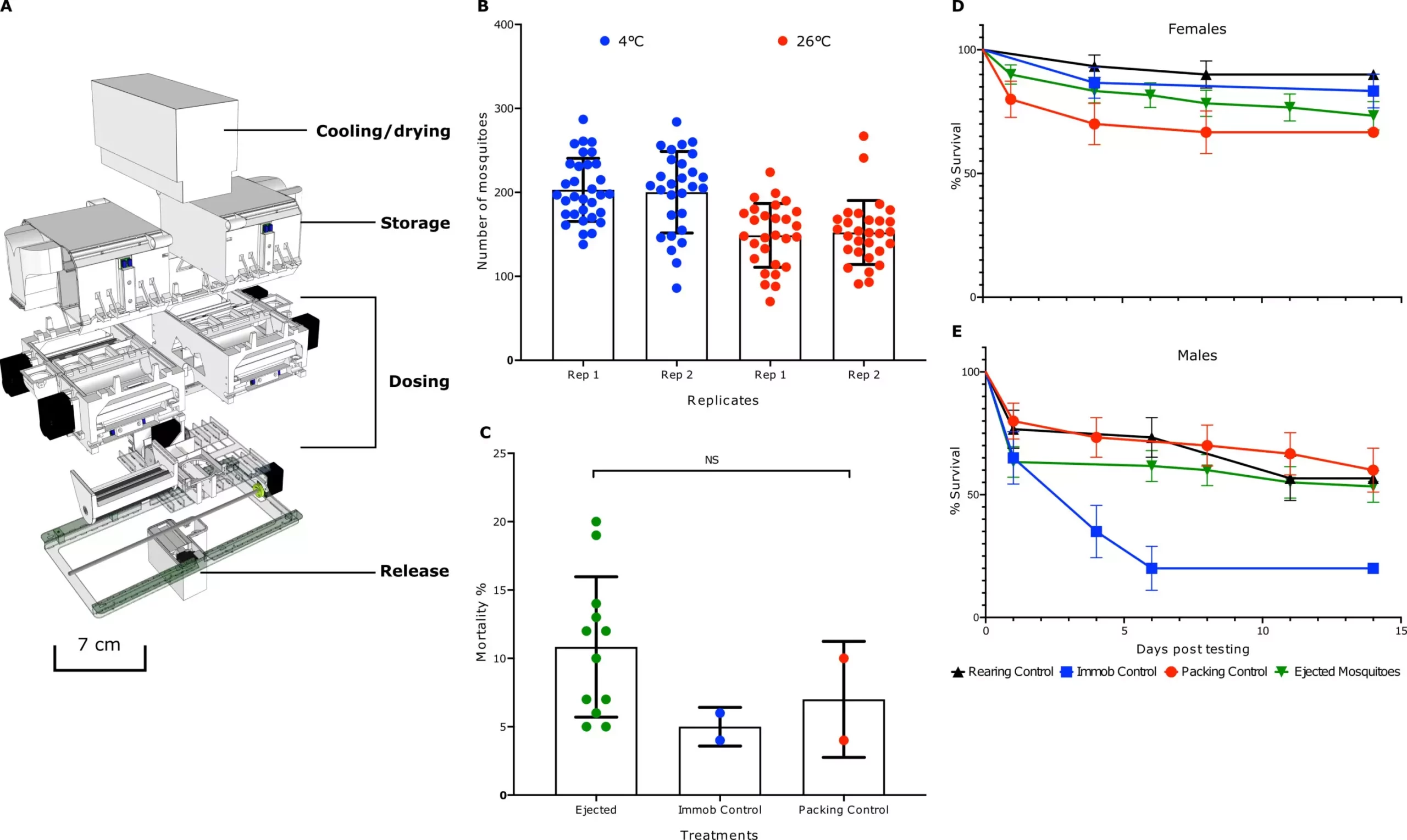The rise of technology in public health is not just a fleeting trend; it stands as a pivotal shift that promises to revolutionize our fight against infectious diseases. One of the most exciting advancements comes from a coalition of international researchers associated with the World Mosquito Program, in partnership with WeRobotics. They have developed an ingenious method to deploy mosquitoes infected with disease-hindering bacteria, utilizing drones to do so. This innovation is not only timely but necessary, as diseases transmitted by mosquitoes, such as dengue fever, continue to pose a significant threat to global health.
Innovation in mosquito population control has been primarily limited to labor-intensive and error-prone methods. Traditionally, large numbers of diseased mosquitoes are bred in controlled environments, infected, and then released manually into the wild. This process is fraught with challenges: it’s inefficient, requiring vast amounts of time and human resources, and can even introduce risks to health workers involved in the operation. However, the approach taken by this research team is radical and emblematic of how modern technology can streamline efforts to combat public health crises effectively.
The Game-Changing Role of Drones
The innovative heart of this project centers around a specialized container uniquely designed for drone application. This container, resembling a compact white box, is engineered to house a staggering 160,000 infected mosquitoes. Its multiple compartments enable precise on-demand release, a feature aligned with the exigencies of modern aerial distribution. The ability to release approximately 150 mosquitoes at strategic intervals from various locations optimizes the spread of the infected population and enhances the overall efficiency of the operation.
But what makes this approach particularly remarkable is not just the actual release mechanism. The drones are equipped with climate control features that ensure the mosquitoes remain viable throughout their journey. This is crucial as maintaining the integrity of the mosquitoes is paramount to the success of the intervention. As noted in Jacob Crawford’s Focus piece in the same issue of Science Robotics, the automation of these processes not only increases efficiency but allows for a scale of operation previously unimaginable in mosquito control strategies.
Field Trials: A Promising Future
Field trials conducted in Fiji serve as a testament to the effectiveness of this groundbreaking methodology. The results illustrate that drone-assisted distribution yields a far more uniform and strategic release than manual alternatives. This systematic approach is significant in itself, as it mitigates the risk of localized oversaturation or understaffing, which traditionally undermined earlier strategies.
In a second round of field tests, the drone’s distribution capabilities demonstrated a marked reduction in mosquito populations in targeted areas, showcasing not just success in release logistics but the tangible results of the underlying scientific research. This dual approach—effective deployment coupled with the biological efficacy of the bacteria—promises a holistic solution to controlling mosquito-borne diseases.
Broader Implications for Global Health
While this research aligns with initiatives aimed at diminishing mosquito populations, it propels broader discussions about environmental ethics and public health policy. It raises critical questions about how we balance ecosystem management with the urgent need for disease mitigation. It cannot be ignored that the introduction of genetically engineered or bacterially-infected mosquitoes into ecosystems must be managed responsibly to prevent unforeseen consequences.
Furthermore, the use of drones in such capacities symbolizes a new frontier in public health, opening discussions about how technology can be iteratively adapted to meet evolving health challenges across various regions worldwide. The implications are profound—not only could it support endemic regions awkwardly balancing public health demands, but it could also be customized and adapted to fight various other vectors of disease transmission.
The research from the World Mosquito Program and WeRobotics encapsulates the transformative potential of integrating technology with public health. Their innovative use of drones for mosquito control represents one of the most promising method advancements in combating infectious diseases from one of the planet’s most notorious foes. The health of numerous vulnerable communities may soon rely on such creative strategies, and as research continues to unfold, this approach deserves both attention and support from global health stakeholders.

